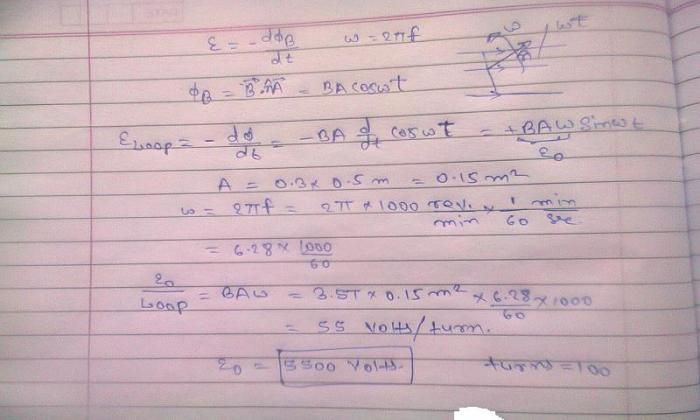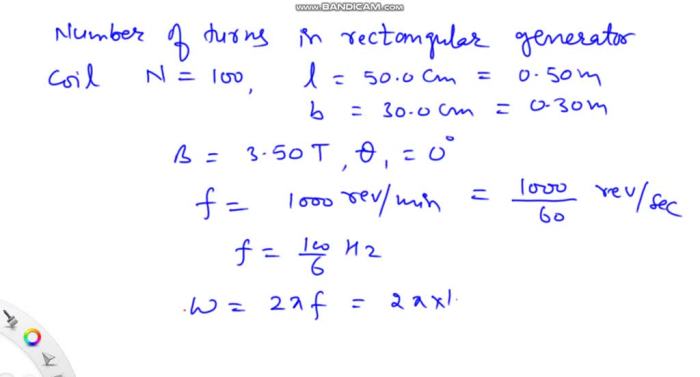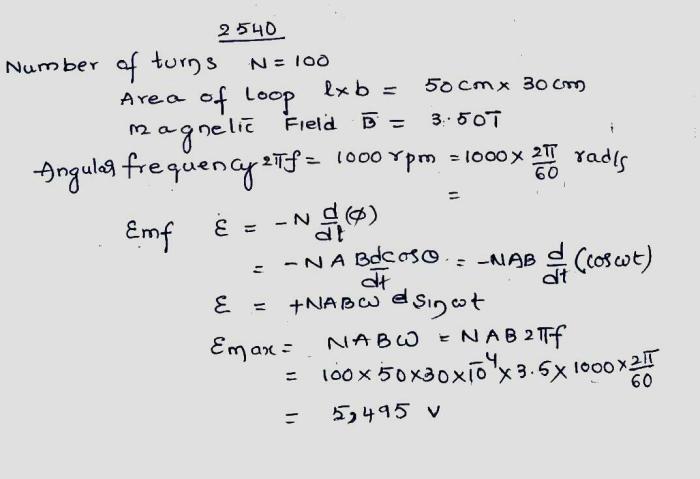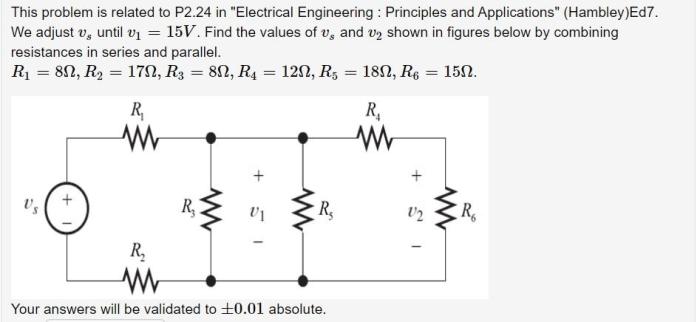An electric generator contains a coil of 100 turns – An electric generator containing a coil of 100 turns stands as a testament to the remarkable principles of electromagnetic induction. This device, a cornerstone of modern energy generation, transforms mechanical energy into electrical energy through a fascinating interplay of magnetic fields and moving conductors.
Delving into the intricate workings of this generator, we embark on a journey to unravel the secrets of its design, operation, and applications.
The coil, a crucial component of the generator, comprises a carefully crafted arrangement of conducting wire wound around a magnetic core. As the coil rotates within a magnetic field, electromagnetic induction generates an electric current within its windings. The number of turns in the coil plays a pivotal role in determining the strength of the generated current, highlighting the importance of optimizing coil design for efficient energy conversion.
Electrical Components of an Electric Generator

An electric generator is an electromechanical device that converts mechanical energy into electrical energy. The main electrical components of an electric generator include a coil, a magnetic field, and a conductor.
Coil, An electric generator contains a coil of 100 turns
The coil is a conductor that is wound into a specific shape. The shape of the coil depends on the type of electric generator. The coil is the part of the generator that generates the electricity. When the coil is rotated in a magnetic field, an electric current is generated.The
coil is made of a conducting material, such as copper or aluminum. The number of turns in the coil determines the strength of the electric current that is generated. The more turns in the coil, the stronger the electric current.
Working Principles of an Electric Generator: An Electric Generator Contains A Coil Of 100 Turns

An electric generator works on the principle of electromagnetic induction. Electromagnetic induction is the process by which an electric current is generated when a conductor is moved through a magnetic field.In an electric generator, the coil is rotated in a magnetic field.
This causes an electric current to be generated in the coil. The strength of the electric current depends on the strength of the magnetic field, the number of turns in the coil, and the speed at which the coil is rotated.The
electric current that is generated by an electric generator can be used to power electrical devices, such as lights, motors, and computers.
Design Considerations for Electric Generators

There are a number of factors that must be considered when designing an electric generator. These factors include:
- The type of electric generator
- The power output of the electric generator
- The efficiency of the electric generator
- The cost of the electric generator
The type of electric generator that is used depends on the application. There are two main types of electric generators: AC generators and DC generators. AC generators produce alternating current, while DC generators produce direct current.The power output of an electric generator is measured in watts.
The power output of an electric generator depends on the size of the coil, the number of turns in the coil, and the speed at which the coil is rotated.The efficiency of an electric generator is a measure of how much of the mechanical energy that is input into the generator is converted into electrical energy.
The efficiency of an electric generator is typically between 85% and 95%.The cost of an electric generator depends on the type of electric generator, the power output of the electric generator, and the efficiency of the electric generator.
Applications of Electric Generators

Electric generators are used in a wide variety of applications, including:
- Powering electrical devices in homes and businesses
- Providing backup power in case of a power outage
- Generating electricity for remote locations
- Powering vehicles
Electric generators are an essential part of our modern world. They provide us with the electricity that we need to power our homes, businesses, and vehicles.
Commonly Asked Questions
What is the function of a coil in an electric generator?
The coil in an electric generator serves as the conductor in which electromagnetic induction generates an electric current. As the coil rotates within a magnetic field, the changing magnetic flux induces an electromotive force (EMF) in the coil, resulting in the flow of electric current.
How does the number of turns in a coil affect the generated current?
The number of turns in a coil directly influences the strength of the generated current. A greater number of turns increases the magnetic flux linkage with the coil, leading to a higher induced EMF and, consequently, a stronger electric current.
What are the key factors that determine the efficiency of an electric generator?
The efficiency of an electric generator is influenced by several factors, including the strength of the magnetic field, the speed of coil rotation, the number of turns in the coil, and the resistance of the circuit. Optimizing these factors is crucial for maximizing the generator’s energy conversion efficiency.

